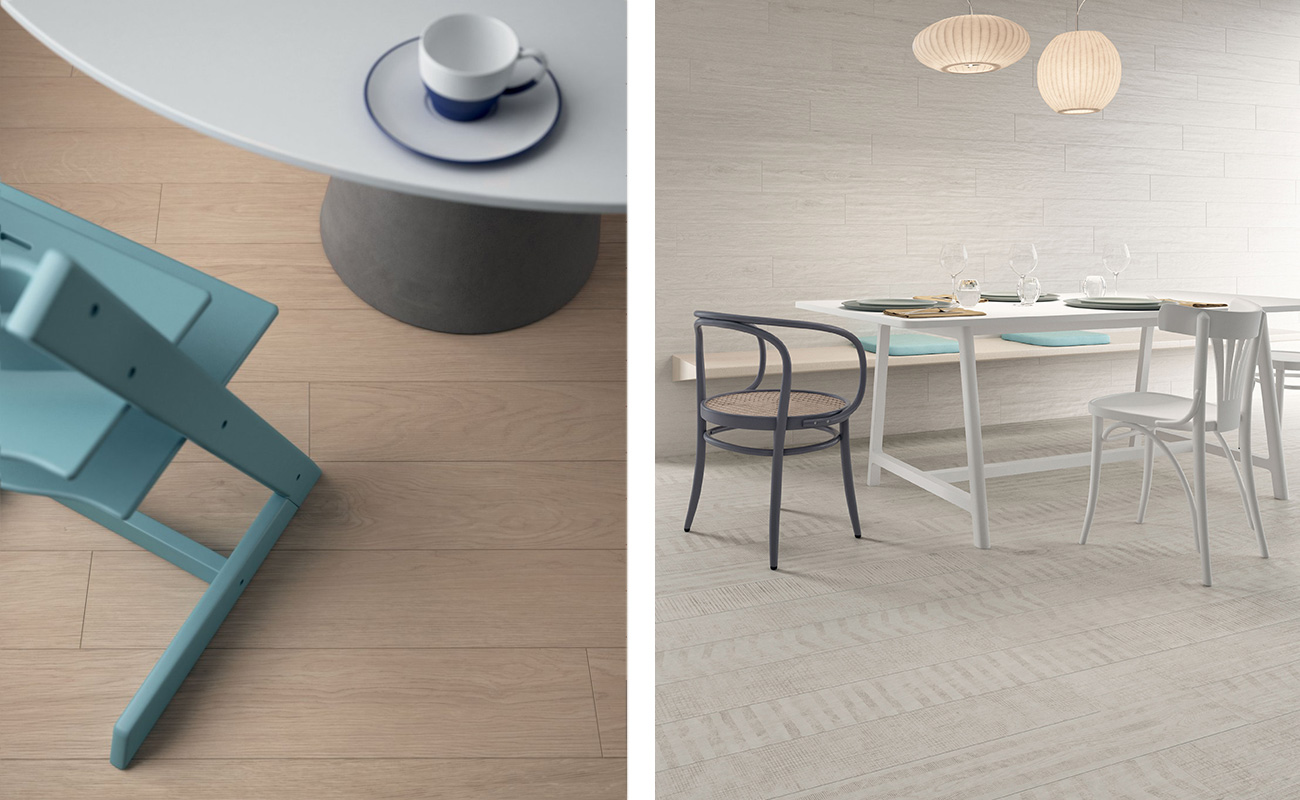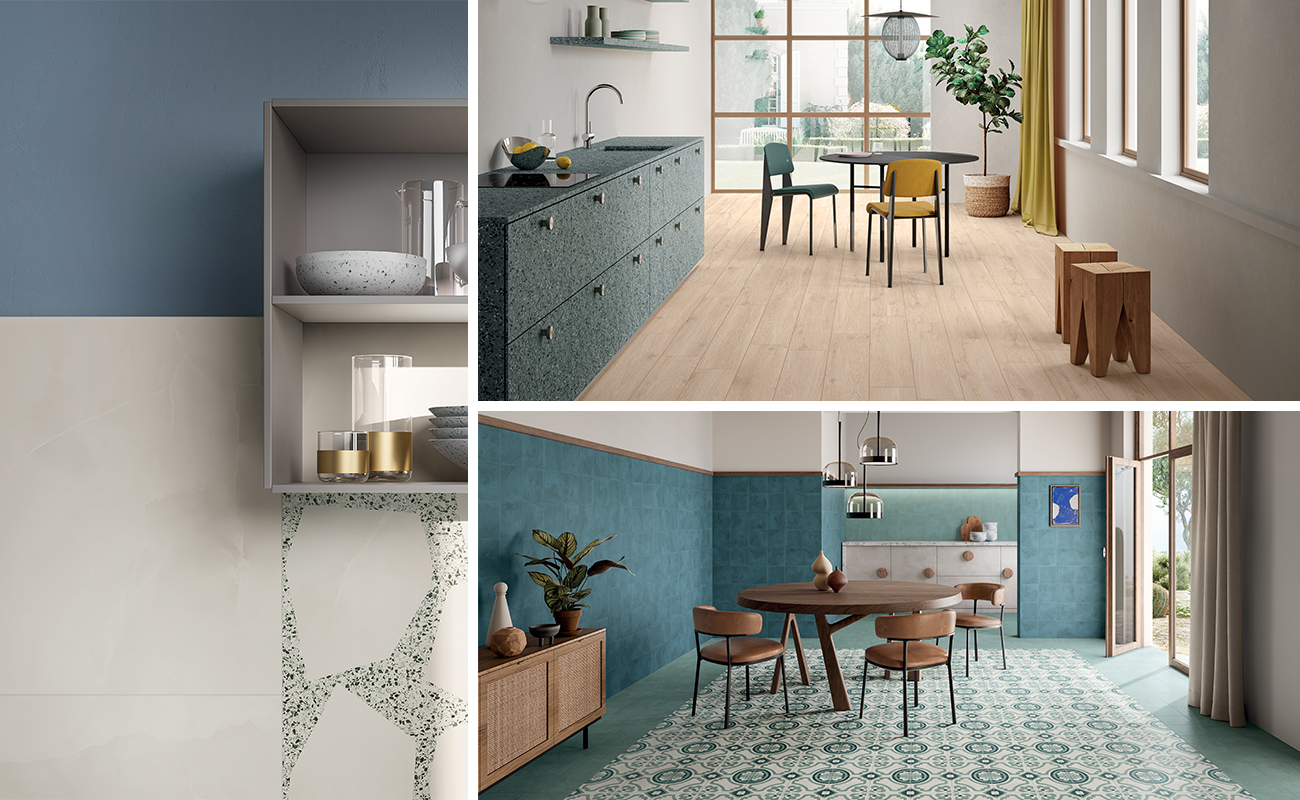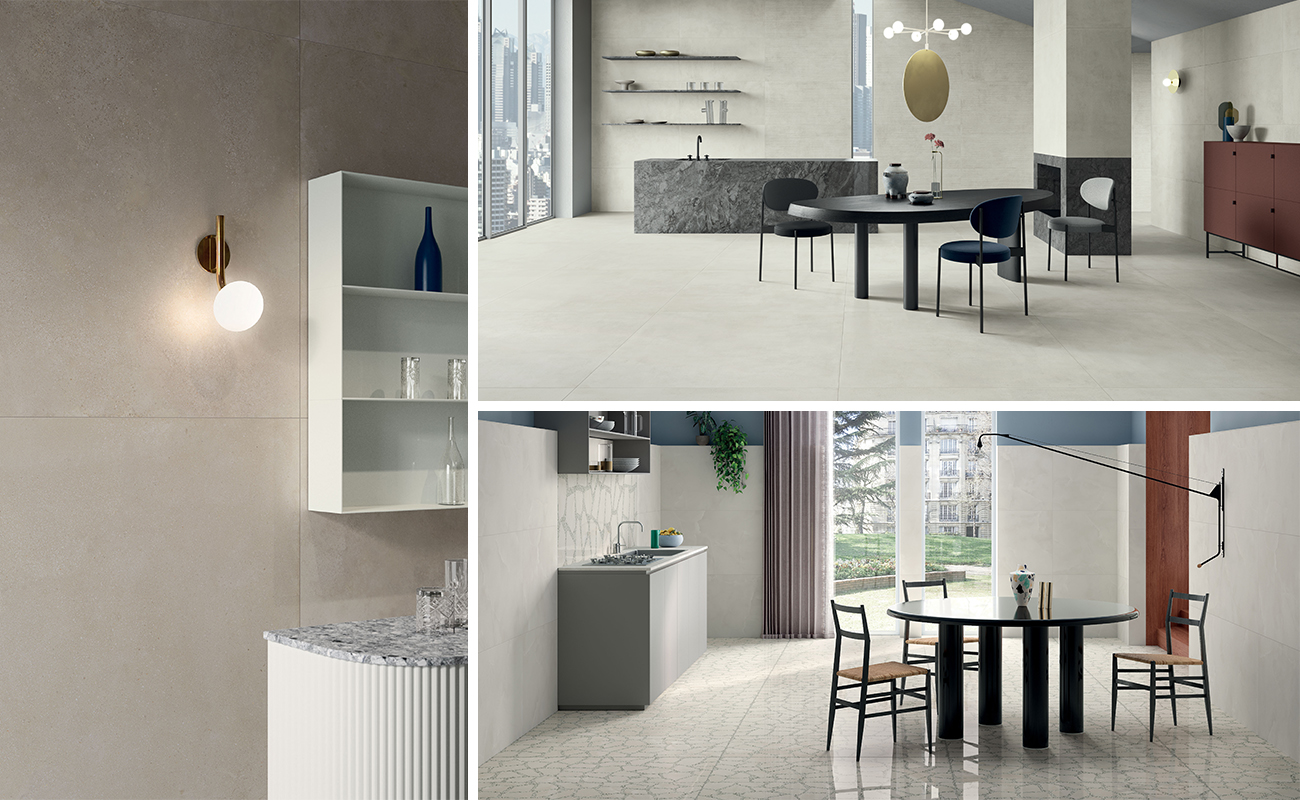Brick effect ceramic tiles are an eclectic solution, able to highlight the charm of classic kitchens or emphasise the urban nature of contemporary kitchens.
Thanks to the versatility of ceramic, the “brick style” tiles are available in a wide range of colours and finishes, from a warm red brick effect, to an aged stoneware look or even a simple white brick, clean and modern.
Brick sized porcelain tiles also offer many advantages over the actual brick cladding that inspires them. Ceramic tiles are resistant, long-lasting, easy to clean and do not fear chemical cleaning products, making them the ideal solution in any classic, urban or contemporary kitchen.
Choosing this type of tile means experiencing the magic of the kitchen as a space that is social but also suggestive, offering all the appeal of a New York loft.


When seeking the perfect kitchen tile we are faced with so many choices that it is easy to overlook one of the most classic and functional options, or rather light coloured tiles. Bright and bold colours are not always the best choice for the walls and surfaces of a kitchen or dining room.
Light coloured tiles effectively boost the perception of space, giving a smaller kitchen a fresh, clean appearance. Light surfaces and wall tiles better reflect the light within the space and tend to soften and smooth the corners of a kitchen, for a space that feels more open.
A light brick can be an effective style element with which to create an airy space, play with contrasts by pairing it with darker graphic elements, or design a creative space, simply by choosing a coloured or darker shade of grout for use between the tiles.
Decorative ceramic tiles offer classic kitchens a vintage flavour with their refined geometric and floral motifs. The pleasantly old-fashioned effect of decorative tiles is not restricted to flooring, as it also lends itself to cladding, whether creating attractive walls, adding a designer touch to more anonymous areas, enhancing a backsplash or surfacing a central island.
The typical floral and geometric motifs of contemporary decorative tiles, so elegant with their dusty surfaces and desaturated colours, have enhanced Victorian buildings ever since the mid-19th century.
The ductility and resistance of porcelain tile has made the soft, retro aesthetic of artisan decorative tiles popular again, even making them suitable for more complex spaces, subject to damp or continuous stress.
The decorative tile is reinterpreted by Marca Corona with different porcelain tile collections and the new Terra.Art project.


When it comes to choosing “comfort effect” surfaces and wall tiling for the kitchen, wood effect ceramic tiles are definitely the most popular trend.
So why do architects and interior designers prefer wood effect ceramics over natural wood flooring or parquet in the kitchen? There are various reasons.
While on the one hand it is impossible to resist the appeal of authentic antique wood cladding, its ceramic counterpart boasts clear advantages that are hard to ignore, particularly in a challenging space like the kitchen.
Porcelain tile is able to faithfully reproduce the veining and aesthetic characteristics of various types of wood without compromising on the technical and functional advantages of ceramic. Ceramic is much more resistant and durable than a parquet flooring for example, which deteriorates much more easily and requires greater care, attention and maintenance.


